Commission on the Status of Minorities
Committee Description
Focuses on the monitoring of the recruitment and retention of students, faculty, staff, and administrators of color at Kutztown University. The responsibilities of the CSM include making recommendations regarding new policies, as well as changes to existing Kutztown University policies, programs, and/or procedures to support the creation of a culturally and psychologically “safe” environment in which the cultural, educational, and intellectual needs of students, staff, faculty, and administrators of color can be met and their experience at Kutztown enhanced. Terms: 2 years. Appointees: 5 of 18 members
-
Membership
Social Equity Office Representative**
Bradley Davis,
Chairperson*
At-Large*** (2 years)
Rebecca Riccardi,
Vice-Chair8/2027
At-Large*** (2 years)
Alexis Martin
8/2027
African American Professional Organization*
TBD
*
College of Education** (2 years)
Michele White
8/2026
College of Liberal Arts & Sciences Representative** (2 years)
Kristina Fennelly, Treasurer
8/2026
College of Visual & Performing Arts Representative** (2 years)
Holly Tienken,
Web Master8/2026
College of Business Representative** (2 years)
Carolyn Gardner
8/2026
At-Large*** (2 years)
Khori Newlander, Secretary
8/2026
Black Faculty Caucus*
TBD
*
Multicultural Center Representative*
Melinda Quinones
*
At-Large*** (2 years)
McKenzie Hollenbach
8/2027
Assistant Dean of Students for Underrepresented and At-Risk Populations
TBD, ex officio
*
Senior Associate Dean and Chief Diversity Officer
Jerry Schearer, ex officio
*
Enrollment Management and Student Affairs*
Caecilia Holt
8/2026
AFSCME Representative (2 years)
Veronique Vlaun
8/2026
Student Representative from African American Student Organization
TBD
Student Representative from African American Student Organization
TBD
Graduate Student Representative
TBD Non-minority Undergraduate Student Government Board Representative
Logan O'Donnell 8/2026 Student Representative from any recognized Latino Student Organization
TBD Latino Caucus Representative
TBD
Latino Caucus Representative
TBD Student Government Board Representative
Rachael Lund 8/2026 Student Government Board Representative
Sabrina Dearie 8/2026 * Indefinite Term of Office
** Appointed by Committee on Committees
*** Appointed by Commission
-
Meeting Times
As needed.
- Mission & Bylaws
-
Minutes
Sign in here to view available archived minutes.
For information regarding the Justice Equity Diversity Inclusion Commission click here.
-
Events
Past Events:
SLAVERY AND ITS IMPACT: REFLECTIONS ON ITS 400TH ANNIVERSARY
October 23, 2019
The Moynihan Report: 50 Year Later A Social, Political & Historical ForumMarch 18, 2015
Slavery and Its Impact: Reflections on Its 400th Anniversary
October 23, 2019 | 183 McFarland Student Union
Slavery and Its Impact: Reflections on Its 400th Anniversary
October 23, 2019 | 183 McFarland Student Union
Slavery and Its Impact: Reflections on Its 400th Anniversary
October 23, 2019 | 183 McFarland Student Union
Slavery and Its Impact: Reflections on Its 400th Anniversary
October 23, 2019 | 183 McFarland Student Union
Slavery and Its Impact: Reflections on Its 400th Anniversary
October 23, 2019 | 183 McFarland Student Union
Slavery and Its Impact: Reflections on Its 400th Anniversary
October 23, 2019 | 183 McFarland Student Union
Slavery and Its Impact: Reflections on Its 400th Anniversary
October 23, 2019 | 183 McFarland Student Union
Slavery and Its Impact: Reflections on Its 400th Anniversary
October 23, 2019 | 183 McFarland Student Union
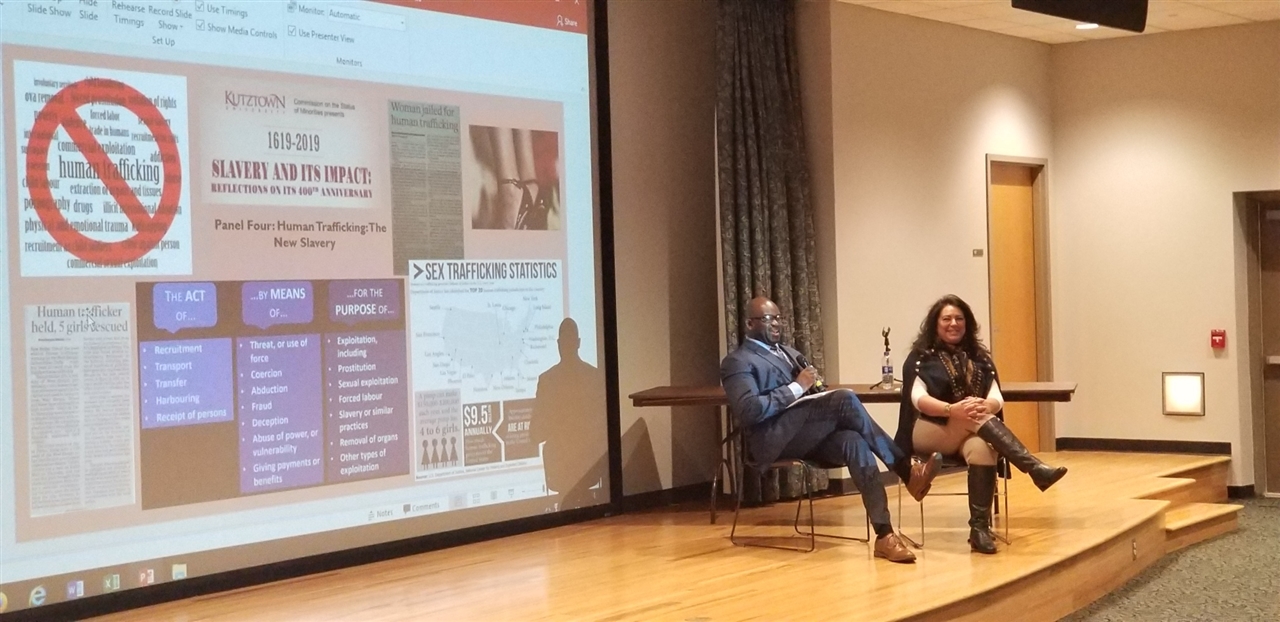
Slavery and Its Impact: Reflections on Its 400th Anniversary
October 23, 2019 | 183 McFarland Student Union
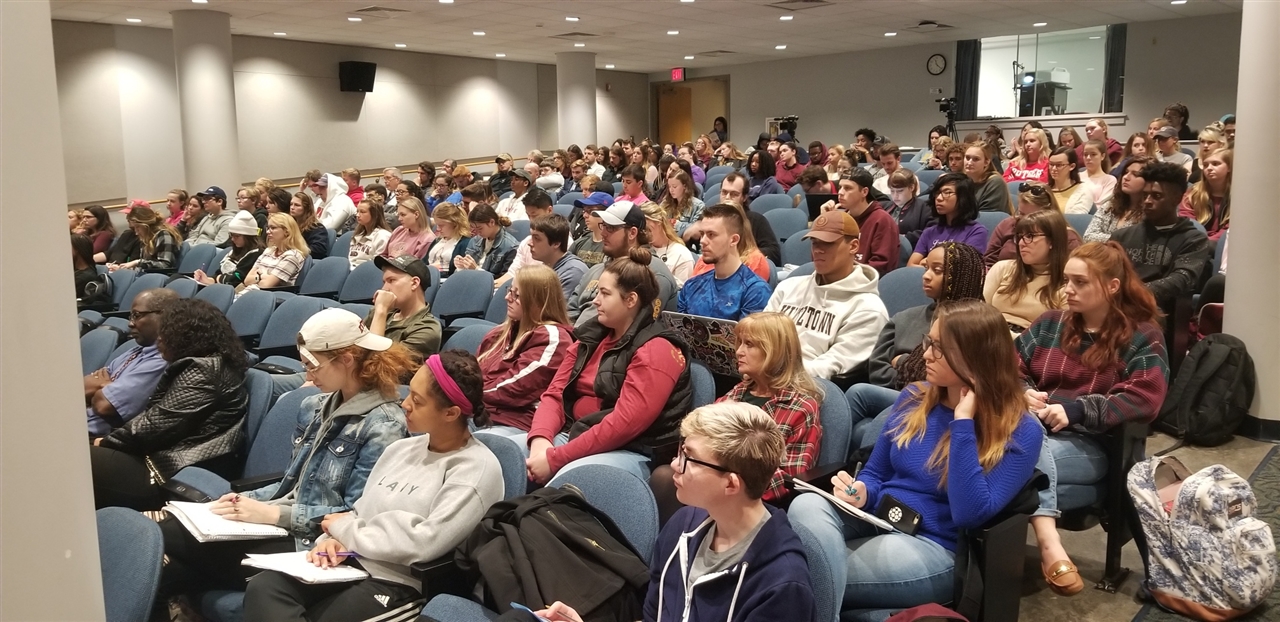
Slavery and Its Impact: Reflections on Its 400th Anniversary
October 23, 2019 | 183 McFarland Student Union
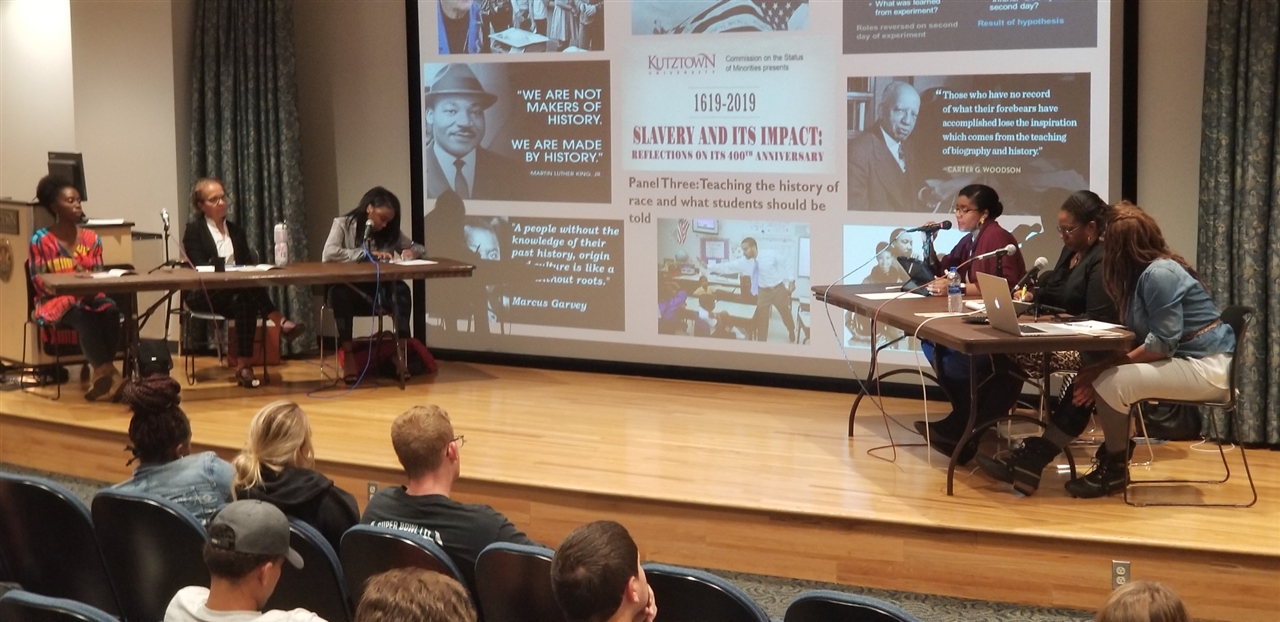
Slavery and Its Impact: Reflections on Its 400th Anniversary
October 23, 2019 | 183 McFarland Student Union
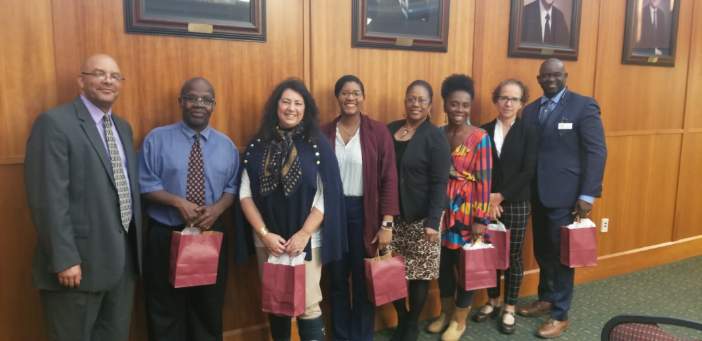
Slavery and Its Impact: Reflections on Its 400th Anniversary
October 23, 2019 | 183 McFarland Student Union
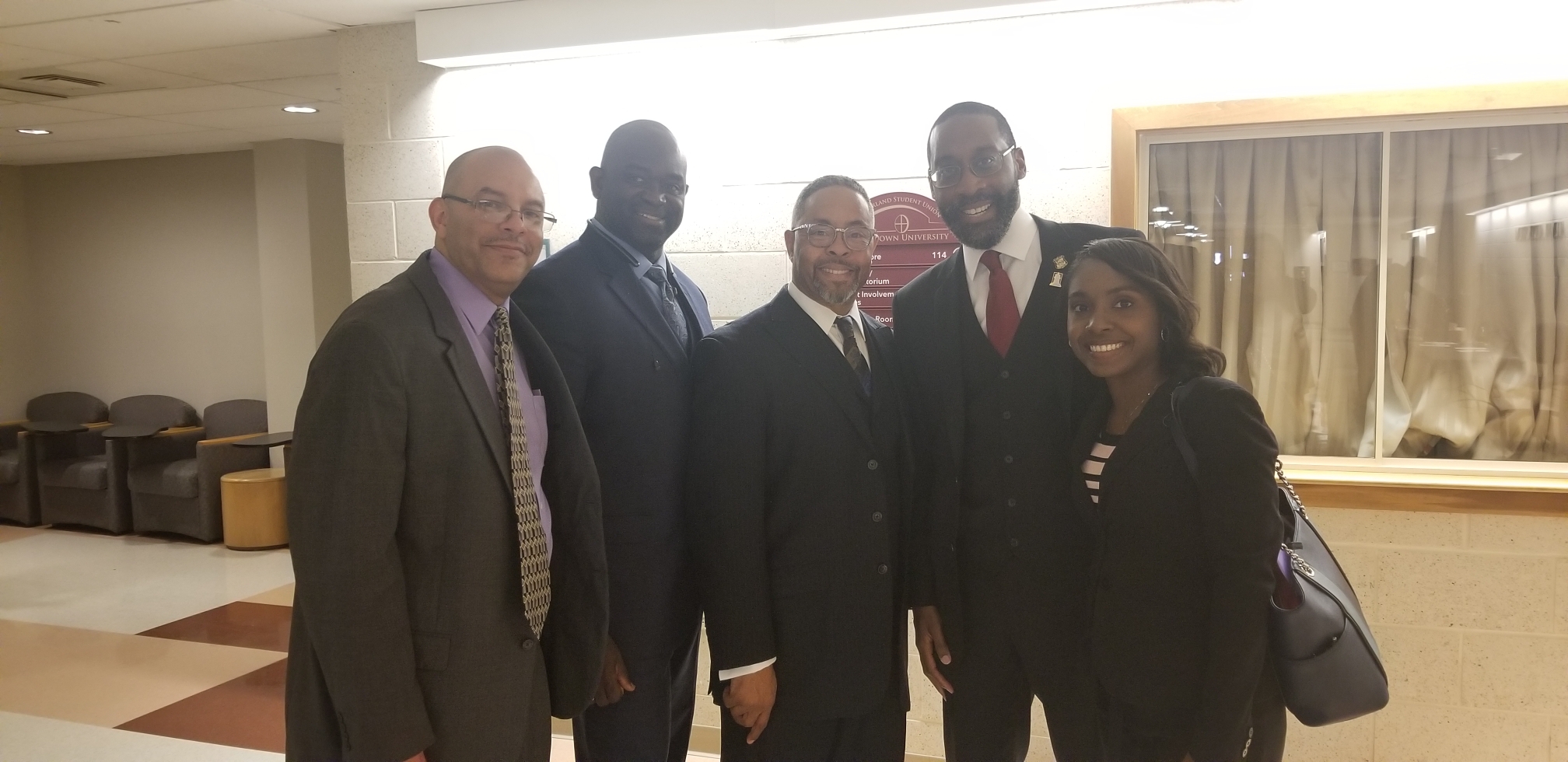
Slavery and Its Impact: Reflections on Its 400th Anniversary
October 23, 2019 | 183 McFarland Student Union
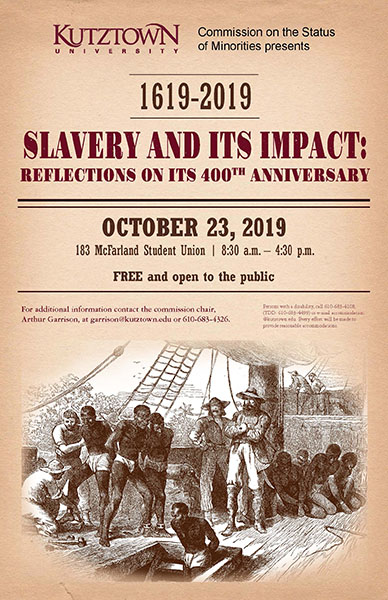
Slavery and Its Impact: Reflections on Its 400th Anniversary
October 23, 2019 | 183 McFarland Student Union






-
Event Summary
The Commission on the Status of Minorities recently hosted a one day conference on October 23, 2019 - “1619-2019: Slavery and its Impact: Reflections on its Four Hundredth Anniversary” - which was comprised of scholars from the university faculty and those of neighboring university institutions. The conference also hosted the showing of the award-winning documentary Liberty to Captivity which documents a modern iteration of slavery – forced prostitution in Pennsylvania – by putting it in the context of the history of slavery in PA. This conference hosted 18 academics from both Kutztown and surrounding universities to discuss the significance of the 400th anniversary of the start of slavery in America. It was held in the SUB 183. Please feel free to contact Arthur Garrison with an Questions
-
Slavery and its consequences 400 years later
In May 1607, the Virginia Company of London established the first colony on the North American continent in Jamestown, Virginia. The Virginia colony was established 13 years before the arrival of the Puritans in Cape Cod, Plymouth, Massachusetts, in November 1620. The Jamestown settlement was a financial venture to establish an English foothold on the continent, to establish a system of trade for North American raw materials.
The Jamestown colony during its first few years was not successful; in fact, the inhabitants nearly starved to death. But in 1613, John Rolfe introduced tobacco as a cash crop in Jamestown. Tobacco proved to be the colony’s salvation when it became the most profitable export industry in the colony and by 1617–1618 more than 40,000 pounds of tobacco was shipped to England. Tobacco was the first of many colonial products farmed to meet European demands for luxury and commercial goods. Farming tobacco proved to be profitable, but it was very labor intensive which was a problem because of the lack of farm labor. The solution was the participation in the international slave trade. The international slave trade was centuries old by the time the first Africans were brought to Jamestown.
Even before the first colonies were settled in the North American continent, the European colonization of South and Central America and the use of large agricultural lands for the harvesting of tobacco and sugar fostered the need for the importation of more than ten million Africans by the European nations to farm these agricultural estates in the Americas.
The international slave trade involved various European nations that forced the immigration of Africans to the Americas and the Caribbean.
- The Portuguese between 1441 and 1836 imported 5.8 million
- The French between 1549 and 1818 imported 1.4 million
- Great Britain between 1562 and 1807 imported 3.3 million
- The Netherlands (Dutch) between 1619 and1814 imported 555,300
- Denmark between 1649 and 1802 imported 85,000
The international slave trade route was a triangle. The first angle was from Europe to Africa in which the European slave traders would trade guns, ammunition, and other finished goods for African slaves. The second angle was from Africa to the Americas and the Caribbean—the Middle Passage. It is estimated that 10-15% (two million) of those imported did not survive the Middle Passage. This angle involved the selling of African slaves for goods for Europe—tea, spices, cotton, tobacco, and other goods. The third angle was the return of these goods to Europe, which were processed as finished goods for sale and trade.
On August 20, 1619, only 13 years after the colony was established, 20 African slaves arrived in Jamestown, Virginia, from Angola. They were originally enslaved by Portuguese slavers and placed on the San Juan Bautista destined for Veracruz in the colony of New Spain but were intercepted by two English ships which took about 60 of the slaves as bounty, and one of the two ships, the White Lion, landed in Point Comfort (Jamestown) looking for supplies. They were subsequently used as forced laborers in raising tobacco. The arrival of the slaves proved to be very beneficial to the developing tobacco-growing agricultural aristocracy of Virginia. Tobacco, and the large tracks of land required for harvesting it, birthed the southern system of plantations, the plantation aristocracy in the South, and the rise of generational wealth fueled and defined by slavery. Within 12 years of the importation of these 20 slaves, more than half a million pounds of tobacco were exported.
Consider the following relationship between the founding of America and black people in American history:
- between 1619 and 1865 is 246 years
- between 1789 and 2019 is 230 years
- between 1865 and 1968 is 103 years
- between 1968 and 2019 is 51 years
The enslavement of black people in the colonies and then in the United States (1619–1865) lasted 246 years, which means slavery and the racism that undergirded it is 16 years older than the entire constitutional history of the United States!
The history of the Black Codes, Jim Crow, and black people being second-class citizens by law (103 years) is slightly less than half as old as the entire constitutional history of the United States (230 years).
Black people being free from Jim Crow (statutory second-class citizenship) is only 51 years old in a country that is 230 years old.
Slavery in America was more than an economic system. Slavery in America adopted the assertion that black people were by definition inferior to white people. The same man who wrote, “we hold these truths to be self-evident that all men are created equal” in 1776, wrote in 1781 that “Blacks, whether originally a distinct race, or made distinct by time and circumstances, are inferior to the whites in the endowments both of body and mind.” More significantly it was asserted by Thomas Jefferson, U.S. Senator John Calhoun, as well as U.S. Senator and President of the Confederacy of the United States Jefferson Davis that enslavement to white people was the natural state of black people in human history. Jefferson found disagreement with Calhoun and Davis on their assertion that slavery was a net positive good. The Supreme Court proclaimed in 1857 that there was no law respecting the rights of black people that white people were obligated to obey. After the Civil War and the fall of Reconstruction the Supreme Court not only said in 1896 that separate but equal was constitutional, but in 1883 ruled that the federal government had no power to protect black people from discrimination at the hands of white people.
After the Civil War, the Thirteenth Amendment was passed which outlawed slavery, “except as a punishment for crime whereof the party shall have been duly convicted….” Subsequently, black incarceration replaced black enslavement. Jim Crow adopted criminal justice policies that criminalized black behavior, required forced work under threat of imprisonment, and passed laws that incarcerated black people for months or years to support the continued need for labor on southern plantations. With the fall of these Jim Crow criminal justice policies — convict leasing, peonage, criminal surety, and apprentice laws at the dawn of World War Two — America in the 1970s through the 1990s adopted new criminal justice policies including, the war on drugs, militarized policing, and mandatory minimum sentencing. These new policies resulted in America exceeding one million people in prison in 1995 with black people accounting for 50 percent of the total U.S. prison population between 1989 through 1995. This disproportionate incarceration has remained with black people accounting for 33 percent of the current prison population while only accounting for 13-14 percent of the total U.S. Population.
Now consider the historical, political, economic, sociological, and psychological developmental impact of this history. Consider the impact of this history on how criminal justice and other government institutions developed and their perception and treatment of black people when black people have only been recognized as equal under the law for 51 years in a nation that is 230 years old.
What is the legacy of this history? Does it matter? Should it matter? How should this history be taught in schools and college classrooms? The goal of this conference, acknowledging the 400th anniversary of the first slaves to arrive in Virginia, is to address these questions.
-
Links to Panel Discussions
8:30a.m. – 9:30 a.m. Panel One: Slavery and Jim Crow: The America it created (MSU 183)
Abstract: Panelists will discuss how slavery developed in the colonial era in American history. Panelists will discuss how slavery impacted the legal, social, and political foundations of American history and culture.
Moderator: Dr. Michael Gabriel, History
Panelists: Dr. Wilbert Jenkins (Temple University)
Dr. Andrew Arnold, History9:45 a.m. – 10:45 a.m. Panel Two: Slavery in America: Does it matter in 2019 (MSU 183)
Abstract: Panelists will discuss the significance of the 400th anniversary of the first 20 slaves that arrived in Point Comfort, present-day Fort Monroe, in Hampton, Virginia (Jamestown Settlement), on August 20, 1619 and how or whether the subsequent two hundred and forty six years of slavery in America has significance to the American society of 2019.
Moderator: Dr. Arthur H. Garrison, Criminal Justice
Panelists: Kurtis Haynesworth, Student
Dr. Thomas Robinson, Psychology
Dr. Mauricia John, Sociology
Rev. Dr. Alyn E. Waller, Enon Tabernacle Baptist Church: Author, "The Code of the Righteous Warrior: 10 Laws of Moral Manhood for an Uncertain World"
11:00 a.m. – 12:00 p.m. Panel Three: Teaching the history of race and what students should be told (MSU 183)
Abstract: Panelists will discuss how issues of race, slavery, Jim Crow are taught in America and what issues are raised in teaching race in the modern American social and political landscape. Focus will be on what students should be told and why.
Moderator: Dr. Lindsey Livingston Runell, Criminal Justice
Panelists: Dr. Ayana Allen-Handy (Drexel University)
Jayla Lewis, Student
Dr. Amber Jean-Marie Pabon, Secondary Education
Dr. Katherine Norris (West Chester University)
Dr. Judith Giesberg (Villanova University)
12:15p.m. – 1:15 p.m. Lunch (Invited only) (MSU 250)
1:30 p.m. – 4:30 p.m. Panel Four: Human Trafficking: The New Slavery (MSU 183)
Abstract: Although slavery is universally condemned worldwide, slavery still is being practiced both in the United States and on all the continents of the world. One aspect of modern slavery is the trafficking of women for forced prostitution. To explore this modern mode of slavery and its connection to the history of slavery in America, the documentary From Liberty to Captivity will be shown. After which a moderated conversation will occur with the director Debbie Wright with Dr. James Jackson. Questions will be taken from the audience.
Moderator: Dr. James Jackson, Psychology
Panelist: Debbie Wright, Director/Producer, “From Liberty to Captivity”
The Moynihan Report: 50 Years Later A Social, Political & Historical Forum (March 18, 2015)
-
Introduction to The Moynihan Report: 50 Years Later
The Moynihan Report: 50 Years Later A Social, Political & Historical Forum
March 18, 2015THE MOYNIHAN REPORT:
An Introduction
In March 1965, The Negro Family: The Case for National Action, otherwise known as the Moynihan Report, was leaked to the press and it ignited a controversy regarding the status of the black family and the impact of that status on American society as a whole. In 1965, Patrick Moynihan, Assistant Secretary of Labor in the Johnson Administration, wrote an internal government policy report to provide support for the unveiling of the declaration of the War on Poverty. Ten years after the beginning of the modern Civil Rights Movement, with the Supreme Court decision of Brown v. Board of Education in 1954 and culminating in the landmark passage of the Civil Rights Acts of 1964 and 1965, policy attention shifted from ending racial Jim Crow and segregation to a focus on economic disparities and the failure of black families to attain the American Dream.
In his famous "Freedom is Not Enough" speech at Howard University in July 1965, President Johnson said, "The voting rights bill will [establish the freedom to vote]. . . But freedom is not enough. You do not wipe away the scars of centuries by saying: 'Now you are free' . . . . You do not take a person who, for years, has been hobbled by chains and liberate him . . . and then say, 'you are free to compete with all the others,' and still justly believe that you have been completely fair. . . . To this end, equal opportunity is essential, but not enough, not enough."
It was this speech, along with Johnson's War on Poverty speech before Congress in January 1964, which began four years of social programs which resulted in Medicare, Medicaid, federal school loans, food stamps, and a host of others between 1964 and 1968. The author of Johnson's 1965 speech was Patrick Moynihan. Being at the cusp of leadership of major policy implementation, Moynihan was sidelined when his report was leaked to the press.
The report made two conclusions regarding the state of the black family. First, the black family was dysfunctional and was getting worse as far as its stability. Second, the damage to the black family could be addressed through direct social programs, the top being employment for the black male and allowing the black male to be the patriarch of his family with support from the black female, just as it was in white families.
The damage to the black family, according to Moynihan, was caused by two factors. The first factor was centuries of slavery and Jim Crow and its impact on the structure of the black family. As Moynihan explained, "[t]hree centuries of injustice have brought about deep seated structural distortions in the life of the Negro American" and that the "Negro situation . . . commonly perceived by whites in terms of the visible manifestation of discrimination and poverty" needed to evolve in order to consider "the effect that three centuries of exploitation have had on the fabric of Negro society itself."
The second factor was the matriarchal nature of the black family in which the black male was neither the bread winner nor the male role model of manhood for young black males. This lack of black male presence in the home leads to failure in school and delinquent behavior of young black male children. Moynihan asserted that because the "negro community has been forced into a maternal structure . . . out of line with the rest of the American society" it has a weak family structure suffering from "a tangle of pathology." At the center of the tangle of pathology is black male unemployment and the failure to hold a responsible position in the home, which resulted in "25% of [b]lack families not [being] intact[,] 24% of [b]lack children born illegitimate [,and] 25% of [b]lack families were single female headed households."
Conservatives of the 1960s, as they do today, ignore the first factor and hail the second factor a political orthodoxy. The report was only intended for internal government review as an empirical justification for the policies of the War on Poverty. The goal of the report was to justify the need for national action. What Moynihan received for his effort was national condemnation. Blacks, liberal ones anyway, cursed him and his report as blaming the victim and justifying racist ideals. Feminists, both black and white, cursed the report for blaming women for the problem of the family and supporting a patriarchal view of America that was under direct challenge by the Women's Movement of the middle and late 1960s.
Due to the backlash, the report was abandoned by the Johnson Administration and Moynihan left the Administration. By the 1980s, the report had reemerged as being prescient and evidence that the policies of the 1960s were a failure. As President Reagan in January 1988 asserted, "the Federal Government declared war on poverty, and poverty won." Conservatives in the 1960s argued that social programs do not help the poor, and the problems of blacks are of their own making to be fixed by them. With the end of legal Jim Crow, the responsibility and fault of their family structure belongs to them. The pathology within the black family, it was asserted, was reinforced by social programs that removed the value of work and personal responsibility from the poor.
Conservatives today, as they did in the 1960s, ignore the Slavery/Jim Crow historical context Moynihan used to assert that poverty was attached to black family structure. In doing so, conservatives distort the report by asserting that Moynihan was right - the issue of poverty lay in the black family. The Moynihan Report and its receipt cannot be understood in a vacuum. It was leaked one year after the rise of Goldwater and the conservative takeover of the Republican Party. It followed the summer riots of 1964 and preceded the urban riots of 1965-1968. The Civil Rights Movement was beginning to shift away from the philosophy of Dr. King to a more militant approach. Lastly, white fear of black crime and its linkage to the Civil Rights Movement was forming a political backlash against the War on Poverty that would lead to President Nixon and later the war on drugs and crime. The politics of the middle 1960s had distorted the receipt of the report. The politics of the post-1960s have continued that distortion.
With the goal of fostering a historical and public policy understanding of these issues, the Kutztown University Commission on the Status of Minorities has organized The Moynihan Report: Fifty Years Later: A Social, Political & Historical Forum.COMMISSION ON THE STATUS OF MINORITIES
The Commission on the Status of Minorities (CSM) is part of the governance structure of Kutztown University. The CSM reports to the University Administrative Council. The CSM focuses on the monitoring of the recruitment and retention of students, faculty, staff, and administrators of color at Kutztown University. The responsibilities of the CSM include making recommendations regarding new policies, as well as changes to existing Kutztown University policies, programs, and/or procedures to support the creation of a culturally and psychologically "safe" environment in which the cultural, educational, and intellectual needs of students, staff, faculty, and administrators of color can be met and their experience at Kutztown enhanced.
The 2014-2015 members of the CSM:
Dr. Arthur H. Garrison (Chair), College of Liberal Arts and Sciences
Dr. Thomas Robinson (Vice-Chair), African American Professional Organization
Dr. James D. Jackson (Treasurer), Black Faculty Caucus
Dr. Soo Goh (Web Master), College of Visual & Performing Arts
Ms. Rhonda Branford, Division of Multicultural Services
Mr. Hunter Wuensche, Student Government Board
Dr. Krista Varano, Elementary Education
Dr. Gary Chao, College of Business
Dr. Qin Geng, College of Business
Ms. Jackie Fox, Esq., Office of Social Equity
Ms. Kiara Richardson, President of the Black Student Union
Videos Edited by Jeffrey DePalma, KUTV. The CSM wishes to provide special thanks to KUTV's Newsbreak for filming the event. - Links to Panel Discussions






